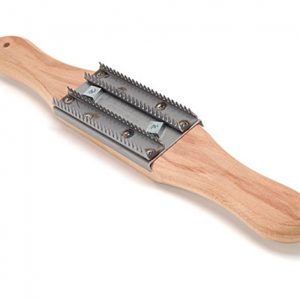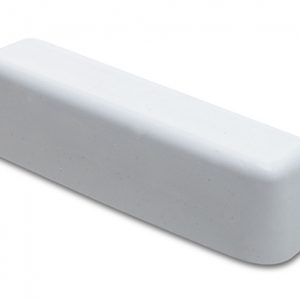The familiar brown or chocolate colored buffing bars of Tripoli Buffing Compound are one of the oldest and most widely used buffing compositions for cutting down and bringing out a high luster on non-ferrous metals. Its fast cutting and bright coloring action on such metals have created its wide use on all types of zinc die castings, sheet and cast brass, copper-plated work and aluminum castings and stampings.
For buffing down castings and stampings, a greasy grade is most generally selected because the extra percentage of grease binders keeps the compound on the buff face longer and hence the cutting action is greater. A second buffing operation using a drier grade of Tripoli Compound, can be used if a smoother and brighter finish is required. Practical with any type of buffing wheel but generally used on a tight, spiral sewed buff, pocket type buff or bias type buff.
Tripoli is fine powdered porous rock used as a polishing abrasive for metalsmithing and in woodworking. It is usually weathered limestone mixed with diatomaceous, amorphous, or crystalline silica. It has similar applications to pumice, but it is generally sold as a finer powder of buffing bars and used for a more glossy polish after an initial treatment with coarser pumice powder. Tripoli particles are rounded rather than sharp, making it a milder abrasive.
This buffing compound is usually mixed with oil, sometimes water, and rubbed on the surface of varnished or lacquered wood with a felt pad or cloth. Rotten stone is sometimes used to buff stains out of wood. Some polishing waxes contain powdered rotten stone in a paste substrate. For larger polishing jobs, rotten stone mixed with a binder is applied to polishing wheels.
It has also been used to polish brass, such as that found on military uniforms, as well as steel and other metals. Plates used in daguerreotypes were polished using rotten stone, the finest abrasive available at the time.




